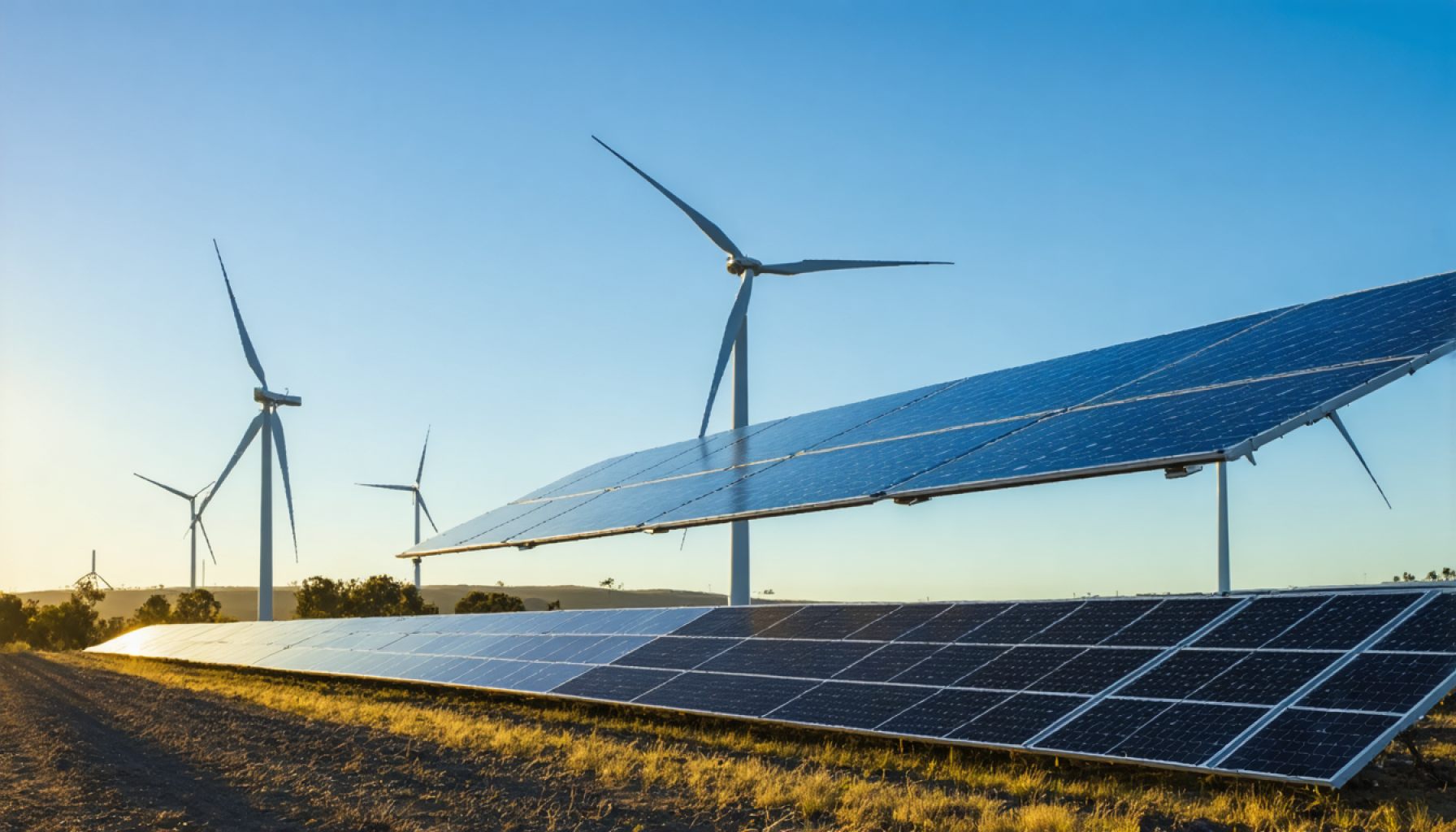- Australia aims to generate 82% of its electricity from renewable sources by 2030, highlighting its commitment to climate action.
- The nation has installed over 3 million solar rooftop systems by 2022, illustrating significant progress in reducing household emissions.
- Wind farms in regions like New South Wales and Victoria capitalize on natural gusts, contributing significantly to sustainable energy goals.
- Governmental policies and incentives are pivotal in driving investment and innovation in the renewable energy sector.
- Challenges include the need for upgrading grid infrastructure to support the energy transition effectively.
- Australia is setting a global example of successful renewable energy integration, driven by its abundant natural resources and unwavering commitment.
Australia basks under a relentless sun and dances with zephyrs that sweep across its vast landscapes. Harnessing these abundant natural forces isn’t just an aspiration—it’s becoming the heartbeat of the nation’s energy transformation. The country’s audacious renewable energy target stands as a beacon of ambition, aiming to generate 82% of its electricity from renewable sources by 2030. Yet, this journey is as complex as it is invigorating.
Amid the ochre sands and sapphire seas, solar panels glitter like modern-day mosaics. By 2022, Australia boasted over 3 million solar rooftop installations, empowering households and reducing emission footprints. Imagine an endless tapestry of sunlit rooftops, each contributing to a brighter, cleaner future.
The vibrancy of wind farms cannot be overlooked. Sleek turbines, standing with quiet resolve in regions like New South Wales and Victoria, harness the untamed gusts that race across open plains. These towering giants symbolize Australia’s resolve to transform gale-force power into sustainable electricity, meeting the heave of increasing energy demands while reducing the carbon footprint.
Government policies fiercely supporting this green revolution have fueled investment and innovation. State and federal schemes provide incentives to embrace solar and wind technologies, catalyzing Australia’s renewable energy euphoria. Yet, the narrative is not without its challenges. Grid infrastructure strains under the weight of transition, requiring strategic upgrades and visionary foresight to quench its thirst for modernization.
At the core of Australia’s renewable quest lies a commitment to climate action and a profound understanding of environmental stewardship. The path may be strewn with hurdles, but the country’s resolve shines as brightly as its sun-drenched shores. With determination anchoring its every stride, Australia propels forward, crafting a legacy that future generations will inherit.
The takeaway? Australia is not just rewriting its energy script; it’s etching a global model of renewable zeal etched in sunlight, wind, and unwavering commitment. This is the rhythm of a greener tomorrow—one that resonates profoundly across its wild, majestic landscapes.
The High Stakes of Australia’s Renewable Energy Ambitions
Australia’s Renewable Energy Endeavor: An In-Depth Exploration
Australia’s bold journey toward renewable energy is captivating and complex, driven by an ambitious target to achieve 82% of its electricity from renewable sources by 2030. As the country leverages its geographical blessings of ample sunlight and powerful winds, it embarks on a challenging yet promising path to reshape its energy landscape.
How to Navigate Australia’s Renewable Energy Transformation
1. Leverage Government Incentives: Take advantage of state and federal schemes that incentivize solar and wind technology adoption. These programs can offer financial savings and promote sustainable practices.
2. Invest in Rooftop Solar Panels: With over 3 million installations by 2022, solar panels remain a highly effective way for households to reduce emissions and electricity bills.
3. Support Grid Modernization Efforts: Recognize the need for strategic upgrades to Australia’s grid infrastructure. Modernization is vital to accommodate increasing renewable inputs and enhance overall energy efficiency.
Insights into Renewable Energy Integration
– Technological Innovations: Australia’s renewable sector thrives on technological advances, making solar panels more efficient and wind turbines more robust. Continued innovation will be key to achieving energy goals.
– The Role of Battery Storage: Integrating battery storage solutions is essential for stabilizing energy supply and managing demand peaks—an integral part of overcoming grid infrastructure challenges.
Market Forecasts and Industry Trends
– Rising Investments: The renewable energy sector in Australia is experiencing increased investments, particularly in solar and wind technologies. These investments are anticipated to grow as global and local markets continue to prioritize sustainability.
– Employment Opportunities: The shift to renewables is expected to create thousands of jobs in energy infrastructure, technology development, and maintenance sectors.
– Global Leadership Potential: With its aspirations and progress, Australia has the potential to become a leading global model for renewable energy. Its lessons can inspire other nations towards sustainable practices.
Pros and Cons Overview
Pros:
– Significant reduction in carbon footprint.
– Long-term cost savings for consumers and businesses.
– Increased energy independence and security.
Cons:
– Initial infrastructure costs can be high.
– Integration challenges with existing grid systems.
– Potential impact on land use and local ecosystems.
Pressing Questions About Australia’s Renewable Energy Future
How viable is Australia’s 2030 renewable target?
While ambitious, the goal is achievable with sustained government support, private sector investment, and public advocacy for clean energy.
What are the potential environmental impacts?
While renewables are cleaner, infrastructure developments like wind farms can affect local wildlife and ecosystems. Balancing environmental conservation with energy production is crucial.
How can individuals contribute?
Homeowners can install solar panels, participate in community energy programs, and advocate for policy changes supporting renewables.
Actionable Recommendations
– For Consumers: Begin transitioning homes to integrated solar panel systems and support measures to improve energy efficiency.
– For Businesses: Invest in renewable technologies and advocate for policy change to facilitate the transition.
– For Policymakers: Prioritize infrastructure upgrades and create comprehensive plans balancing growth with conservation.
Australia is not only transforming its energy footprint but also setting a global benchmark. With continued dedication, the country can redefine the paradigm of renewable energy.
For more insights into Australia’s renewable energy initiatives, visit the official government website.
